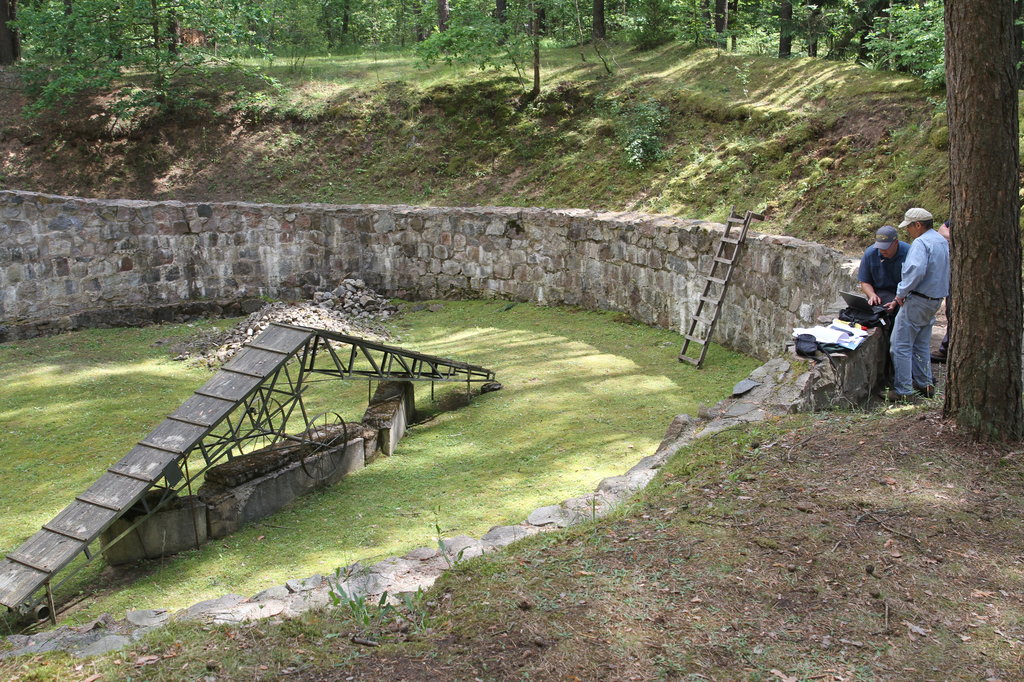
Jewish forced laborers dug a tunnel from this holding pit near Vilnius, Lithuania, into the surrounding forest. Photo: Ezra Wolfinger for NOVA
In a look back at the top science stories of 2016, the New York Times science desk included non-invasive archaeology last summer at Ponar outside Vilnius. In “Evidence of a Great Escape” (not to be confused with The Great Escape at Stalag Luft III in Poland), New York Times science writer Nicholas St. Fleur talks about the discoveries made there.
§§§
In 1943, the Nazis forced 80 Lithuanian Jews to dig up the rotting bodies of their murdered neighbors, pile them on top of wood and burn them.
They were then ordered to mix the ashes with sand and bury the remains so no one would know of the atrocities committed at Ponar, an extermination site where the Nazis executed more than 100,000 people.
For several months the so-called Leichenkommando, or “corpse unit,” exhumed thousands of bodies from mass graves and incinerated them. But they knew that after they finished their jobs the Nazis would shoot them as well, so they hatched a daring escape plan.
For 76, days the prisoners dug a tunnel using only their hands and some spoons they found. On April 15, 1944, during the darkest night of Passover, they staged their escape. They climbed through the 100-foot tunnel and into the nearby woods. But the noise alerted the Nazi patrol, which fired at them. Only 12 of the original 80 escaped.
Of those who escaped, 11 survived the war. Their testimonies were the only evidence of the escape. But in July, a team of archaeologists working with the PBS science series NOVA, found the tunnel. Using tools that allow researchers to peer beneath the ground, the archaeologists were able to pinpoint the exact location of the underground escape path.
Finally, there was physical evidence to help tell the tale of one of the greatest escape stories during the Holocaust.
After writing the story I came across a chilling interview with Mordechai Zeidel, who was one of the survivors of the escape. After leaving Ponar, which is called Ponary in Polish, he returned to liberate Vilnius, the city where he had once lived.
“I had no family left,” he said. “I knew I had burned them all in Ponary.”
Full story here.

